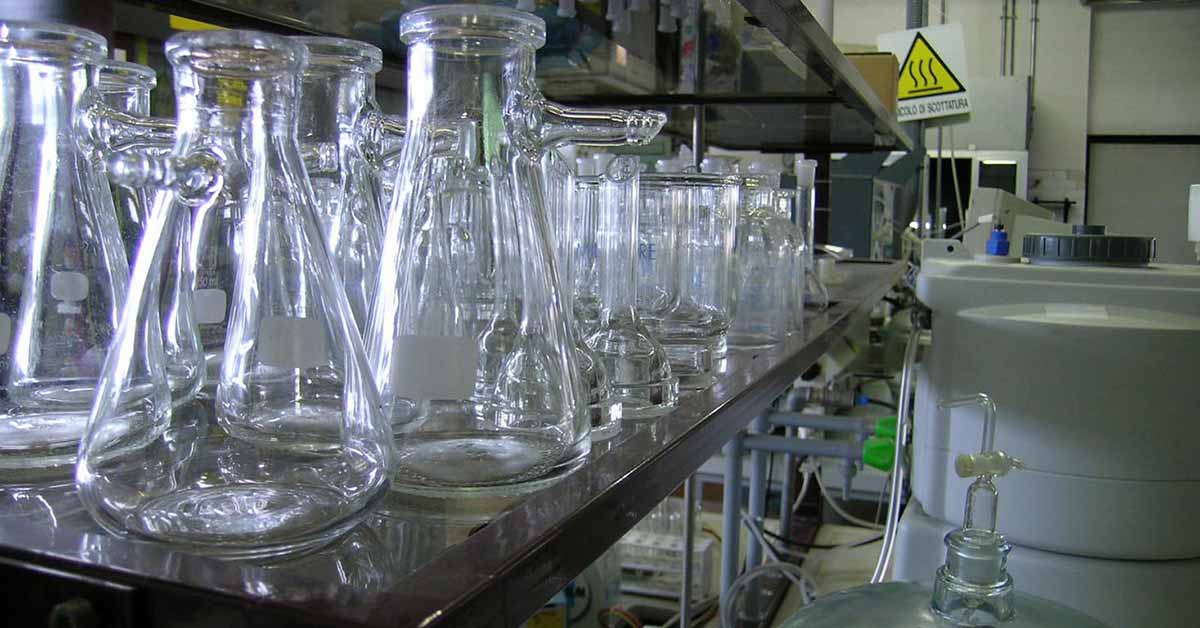
WHY THE COLLABORATION BETWEEN GAMMARAD ITALIA AND LATI
Polymers used to manufacture medical devices and packaging may be sensitive to hydrolysis caused by autoclaving. Temperatures exceeding 120°C and pressurized steam may impair product functionality causing material deformation, distortion, breaking or softening. On the other hand, sterilization by gamma rays (gamma irradiation) is effective and does not cause significant temperature increases. Besides, it also allows the sterilization of materials already contained in the final package with even complex structures. Of course, materials require behavioral tests to check their compatibility with gamma rays.
To respond to the new market requirements, Lati and Gammarad Italia have started a collaboration aimed at testing irradiation on innovative plastics.
THE CHOICE OF MATERIAL TYPES TO BE TESTED
It was decided to test some materials intended for contact with food, as they are also widely used in biomedical and pharmaceutical applications.
As prescribed by regulations, any object coming into contact with human body, skin or mucous membranes for surgical activity as well as diagnosis and therapy, has to be sterilized.
Food and cosmetic industries are involved in the aseptic packaging of products without preservatives and unpasteurized.
BIOMEDICAL AND DIAGNOSTIC SECTOR
PHARMACEUTICAL AND COSMETIC SECTOR
packaging and pharmaceutical products for human and veterinary use.
FOOD SECTOR
food packaging in aseptic environment, caps and containers.
TEST MODES
Some families of thermoplastics manufactured by LATI were tested under three different irradiation doses: respectively 30, 60 and 150 kGy. Then, the variation of the following properties was evaluated:
IRRADIATION DOSES
The 30 kGy dose is normally used for sterilization of medical devices, pharmaceuticals and packaging. The European Pharmacopoeia (Ph.EUR. paragraph 5.1) provides for sterilization by ionizing radiations with a minimum dose of 25 kGy.
The 60 kGy dose is used both in irradiation chemistry (modification of material properties, cross link) and sterilizing and antiviral treatments.
The 150 kGy dose is only used in irradiation chemistry (modification of material properties).
TEST RESULTS
THERMAL AND MECHANICAL VARIATIONS
Mechanical decay (impact resistance, tensile modulus, tensile strength and elongation at break) as well as thermal decay (HDT and Vicat) were tested. Except for Latigea B01 (PLA) at extremely high levels of irradiation, the materials showed no significant changes.
One of the most important parameters that best quantify the degree of mechanical decay of the material as a result of irradiation is the percentage tensile elongation at break: a reduction clearly shows a breaking of the molecular chains resulting in weakening. None of the tested materials showed a reduction in elongation at break at 30 kGy. Sometimes, this value even showed a slight increase due to uncontrollable effects (moisture absorption, experimental error, etc.) or any secondary phenomena (partial cross-linking) certainly worthy of further investigation.
COLOR CHANGES
Yellowing, darkening, and change of the degree of transparency depend on the intrinsic chemistry of the material. This parameter is important as during medical procedures, operators must be able to quickly identify the device by color. Lapex R, Latigea, and Larton show no significant color changes.
DIMENSIONAL STABILITY
All materials remain dimensionally stable.
ODOR CHANGE
No material shows odor change.
Lapex R and Larton are the materials that do not undergo any mechanical, thermal or chromatic change when exposed to three doses of irradiation.
Partly due to its origin from renewable sources, Latigea shows good resistance to the treatment up to 30 kGy. This is an important feature for the use of this new family of materials in sterile applications where autoclave cannot be considered.
Most of the products tested, however, show no substantial changes in technical properties, but specially the color shows to be affected by the treatment.